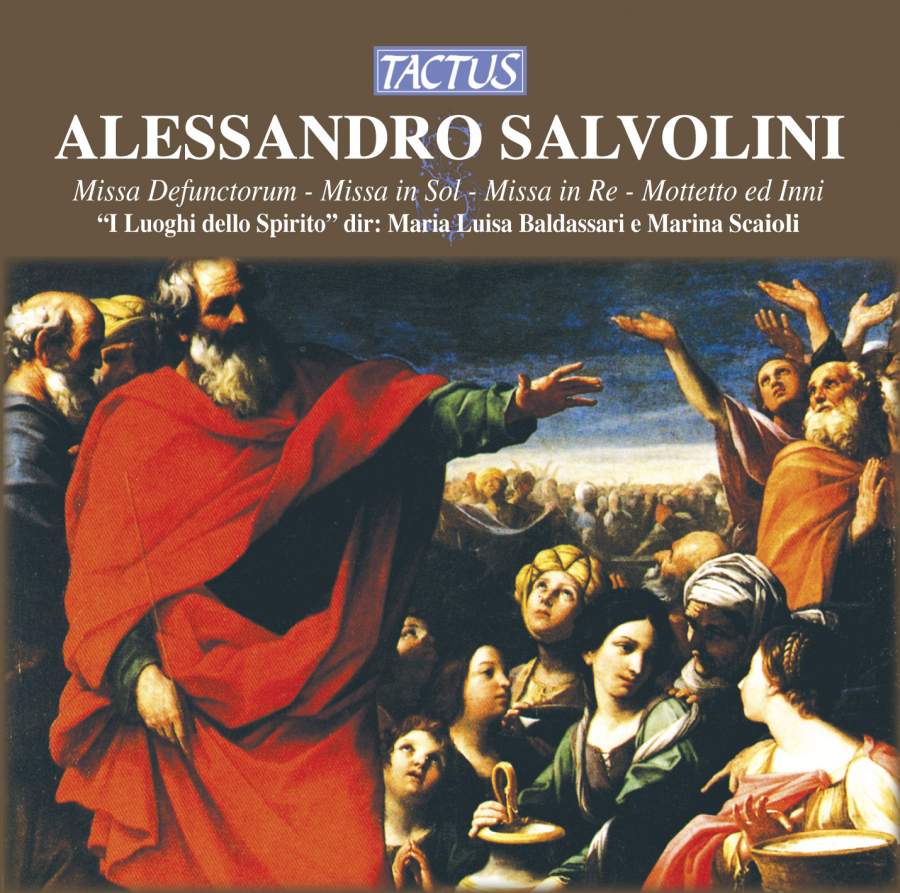Logowanie
Mikołaj - ten to ma gest!
Elton John, The Mamas & The Papas, Cat Stevens, Rod Stewart, Bobbie Gentry, Stevie Wonder, Engelbert Humperdinck
Memory Lane
Edycja Numerowana - 1000 egzemplarzy w skali światowej
RACHMANINOV, Eiji Oue, Minnesota Orchestra
Symphonic Dances / Vocalise
Best Recordings of 2001!!! NAJCZĘŚCIEJ KUPOWANA PŁYTA Z RR!
Karnawał czas zacząć!
Music of Love - Hi-Fi Latin Rhythms
Samba : Music of Celebration
AUDIOPHILE 24BIT RECORDING AND MASTERING
CHOPIN, LISZT, DEBUSSY, DVORAK, Gerhard Oppitz
Dances romantiques - A fantastic Notturno
Wzorcowa jakość audiofilska z Clearaudio
Winylowy niezbędnik
ClearAudio
Double Matrix Professional - Sonic
najbardziej inteligentna i skuteczna pralka do płyt winylowych wszelkiego typu - całkowicie automatyczna
SALVOLINI, I Luoghi dello Spirito, Maria Luisa Baldassari
Masses / Motets / Hymns (I Luoghi dello Spirito, Baldassari, Scaioli)
- I Luoghi dello Spirito - orchestra
- Maria Luisa Baldassari - conductor
- SALVOLINI
I Luoghi dello Spirito Maria Luisa Baldassari Marina Scaioli (organ) The Bayerische Staatsbibliothek in Munich houses choir books copied in about 1565 (Mus. Ms. 17, 51, 54, 2746) which not only bear the name Andrea Gabrieli, but also those of Orlando de Lassus, Johannes Lockenburg, Gottfried Palmarts, Johannes Flori, Ivo de Vento and Anton Gosswin, who wrote a collection of liturgical intonazioni (masses and motets) probably intended for the music chapel of Duke Albrecht V of Bavaria. There are four compositions by Andrea Gabrieli (died 1585): two Parody Masses in Mus. Ms. 17, a Missa Brevis nel modo di Re, copied in Mus. Ms. 54 and a Missa Brevis nel modo di Fa in Mus. Ms. 2746. Whilst the two compositions in Mus. Ms. 17 are included in the only collection of published masses by Andrea Gabrieli, the Primus liber missarum sex vocum (Venice, eredi di Antonio Gardano, 1572), the other two were not published until recently, and the only evidence of their existence is the manuscripts conserved in Munich. The Missa Brevis nel modo di Fa is an interesting example of the recovery of musical tradition, because it was very widely performed and became part of the liturgical music repertory as a result of various modern transcriptions. The Missa Brevis nel modo di Re was less successful; even though it was mentioned in the most important dictionaries, it was not part of the polyphonic music repertories until Francesco Facchin published the first modern transcription (Padua, Armelin Musica, 1997), and this was followed by a partial one by Camillo De Biasi, published in the magazine “La Cartellina” (XXIII-XXIV, 1999-2000): both transcriptions were based on the single source in the Bayerische Staatsbibliothek. According to the information available to us, it is reasonable to suppose that the Missa Brevis nel modo di Re was composed in 1562 when Andrea Gabrieli was in Bavaria, Germany. The requirements of the Council of Trent, that the sense of sacred song texts should be absolutely clear was the origin of the Missa Brevis, a polyphonic form no longer based on techniques such as cantus firmus, parody and paraphrase, but that intoned the texts of the Ordinary so that the music corresponded to the text, using criteria such as brevity of construction, simplicity of counterpoint and the absence of secular elements.





























